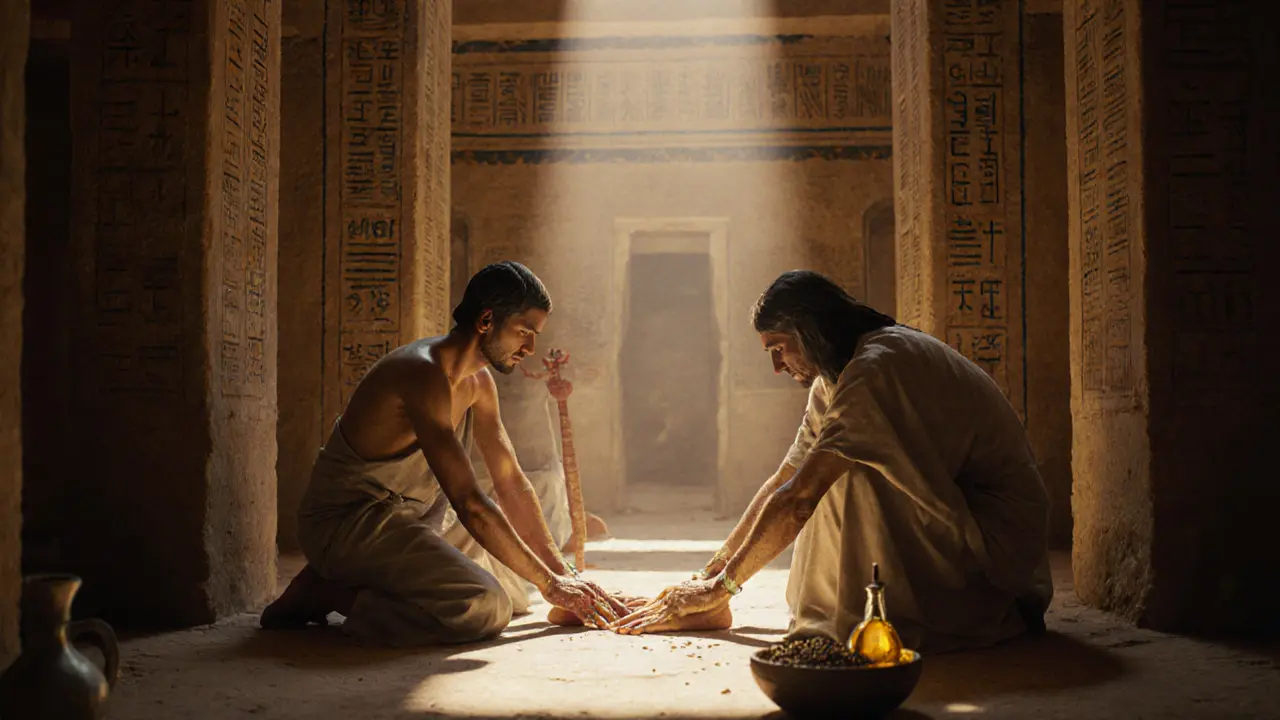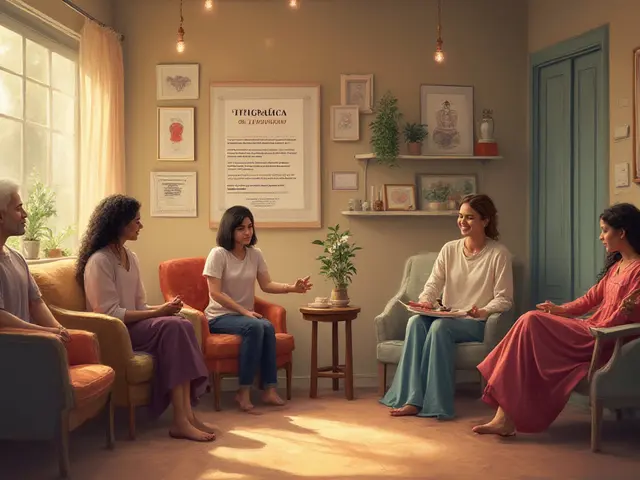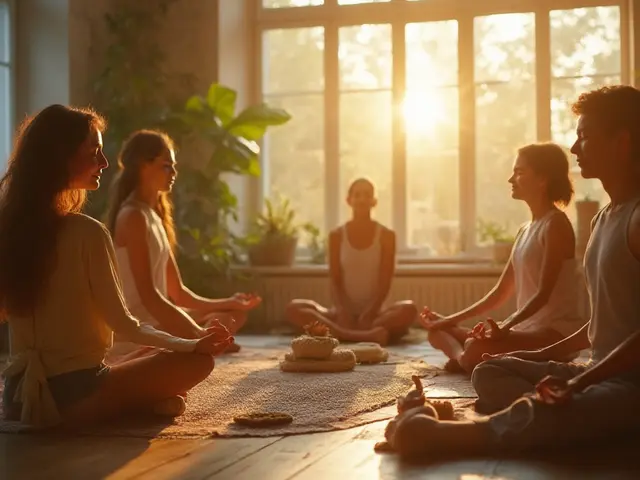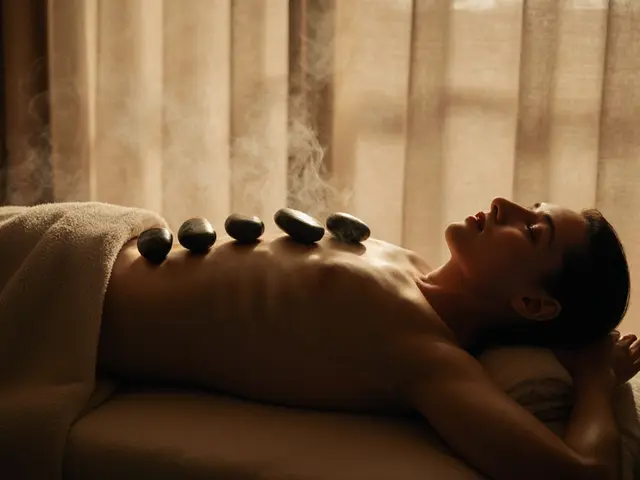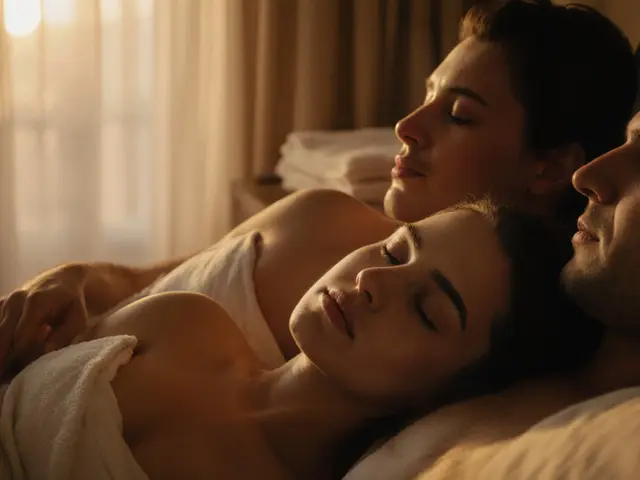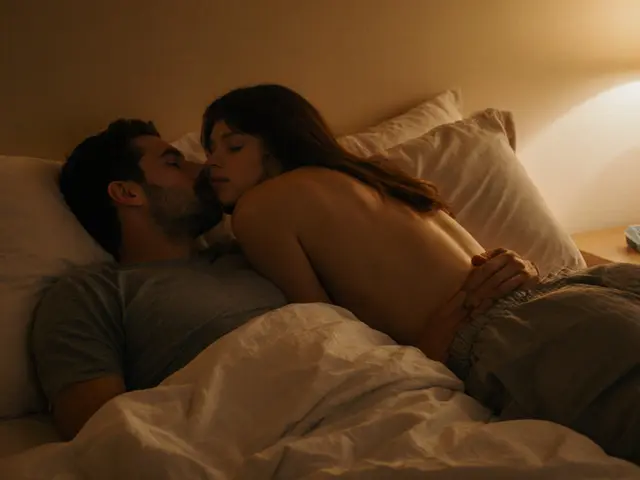Long before spas and aromatherapy oils became trendy, people were rubbing, pressing, and kneading each other’s bodies to ease pain, heal injuries, and connect with one another. Body massage isn’t a modern luxury-it’s one of the oldest forms of healing known to humanity. From the temples of ancient Egypt to the bamboo sticks of rural Thailand, every culture developed its own way of using touch to restore balance. The story of massage isn’t just about relaxation. It’s about survival, spirituality, and the shared human need to soothe pain with hands.
Massage in Ancient Egypt: The First Recorded Practice
The earliest written evidence of massage comes from Egypt, around 2330 BCE. A tomb painting in the burial chamber of Ankhmahor, a high-ranking official, shows two men receiving foot and hand massages. The scene is labeled with hieroglyphs describing the treatment as a method to maintain health and vitality. Egyptians didn’t just massage for comfort-they believed touch could move energy through the body. They used oils pressed from sesame, almond, and castor seeds, often mixed with herbs like myrrh and frankincense. These weren’t just for scent; they had antiseptic properties that helped heal cuts and prevent infection.
Massage was also part of their medical system. The Ebers Papyrus, a 3,500-year-old medical text, mentions rubbing the body to relieve joint stiffness and digestive issues. Egyptian healers worked alongside priests, treating the body and spirit together. This blending of physical care and spiritual belief became a blueprint for many later traditions.
Traditional Chinese Medicine and the Meridian System
In China, massage was formalized over 2,500 years ago as part of Traditional Chinese Medicine (TCM). The Huangdi Neijing, or Yellow Emperor’s Classic of Internal Medicine, written around 100 BCE, details massage techniques called Anmo-a combination of pressing, rubbing, and stretching. Practitioners didn’t just target sore muscles. They worked along energy pathways called meridians, believing blocked energy (qi) caused illness.
Chinese massage evolved into what we now call Tui Na, a system still used today in hospitals across China. Unlike Western massage, Tui Na often includes acupressure points, joint mobilization, and even sound-based techniques like tapping with the knuckles. It was used to treat everything from childhood fevers to chronic back pain. The Chinese also developed herbal poultices and heat therapy to enhance massage effects. This holistic approach-touch, herbs, and energy flow-remains central to many Asian healing traditions.
India’s Ayurveda and the Birth of Abhyanga
Over 5,000 years ago in India, massage became deeply tied to Ayurveda, the world’s oldest system of holistic medicine. The word Abhyanga means "oil massage" in Sanskrit, and it was considered essential for maintaining health, not just fixing problems. Ayurvedic texts like the Charaka Samhita describe using warm sesame or coconut oil infused with herbs like turmeric, ashwagandha, and neem. The massage was rhythmic, flowing, and often done by family members before sunrise.
Abhyanga wasn’t just for the body-it was for the mind and soul. It was believed to calm the nervous system, improve circulation, and slow aging. In royal courts, trained attendants performed daily massages on kings and queens. Even today, in rural villages across India, mothers massage their babies with warm oil as a ritual of bonding and protection. The practice spread to Southeast Asia through trade and religious exchange, influencing massage styles in Thailand and Indonesia.
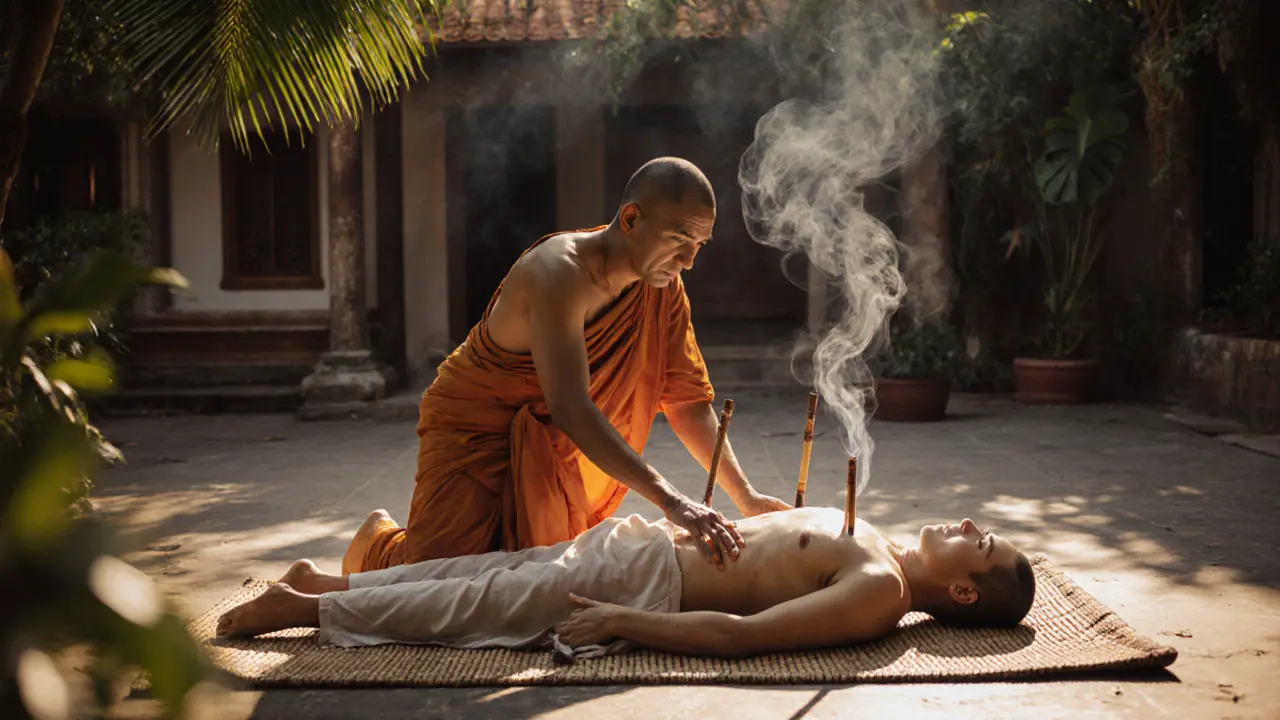
Greece, Rome, and the Rise of Massage as Public Wellness
The Greeks adopted massage from Egypt and made it part of athletic training. Hippocrates, known as the father of medicine, wrote in 400 BCE that "the body needs to be rubbed" to restore health. Greek athletes used oils and friction techniques to prepare for the Olympics and recover from injuries. They believed strong muscles needed strong touch.
The Romans took it further. Public bathhouses, or thermae, became social hubs where people soaked, sweated, and received massages. Roman masseurs, often slaves or trained professionals, used strigils-metal scrapers-to remove oil and dirt after rubbing. Wealthy Romans hired specialists to perform full-body treatments with perfumed oils. Massage was so common that it was included in daily routines, much like brushing teeth today.
But when the Roman Empire fell, so did public massage. For centuries, it faded in Europe, seen as indulgent or even immoral by the Church. The knowledge survived in monasteries and among traveling healers, but it was no longer mainstream.
Traditional Asian Practices: Japan, Thailand, and Indonesia
In Japan, massage took on a more precise form. Anma, developed in the 8th century, was influenced by Chinese Tui Na and focused on pressing along meridians. It later evolved into Shiatsu in the 20th century, meaning "finger pressure." Shiatsu uses thumbs, palms, and elbows to apply rhythmic pressure to specific points, aiming to balance energy flow. Unlike Western massage, it’s done through clothing, often on a mat on the floor.
Thailand’s Nuad Boran, or "ancient massage," blends elements from India and China. Practitioners use their hands, feet, elbows, and even bamboo sticks to compress muscles and stretch joints. It’s performed on a mat, and the client wears loose clothing. The practice includes yoga-like stretches and energy line work, called sen lines, which resemble meridians. Thai massage was traditionally taught in temples and passed down through generations of monks.
In Indonesia, the tradition of urut-a deep, rhythmic massage using herbal oils-was passed down in families. Often combined with bone-setting and steam treatments, it was used to treat childbirth injuries, sprains, and fatigue. These practices weren’t just about pain relief. They were cultural rituals, often tied to rites of passage or seasonal changes.

Modern Revival: From Marginal to Mainstream
Massage didn’t return to the West until the 1800s. A Swedish physiotherapist named Per Henrik Ling developed a system of movements called Swedish massage-combining effleurage, petrissage, friction, tapotement, and vibration. He called it "medical gymnastics," but it quickly became known as massage. By the 1900s, it was taught in medical schools across Europe and the U.S.
The 1970s brought a boom. As stress and sedentary lifestyles grew, people turned to massage for relief. The counterculture movement embraced holistic healing, and massage therapists began opening private clinics. In 1987, the American Massage Therapy Association was founded, helping standardize training. Today, over 400,000 licensed massage therapists work in the U.S. alone, and the global massage therapy market is worth over $130 billion.
But modern massage still carries echoes of its past. Deep tissue work echoes Tui Na. Swedish strokes mirror ancient Greek techniques. Aromatherapy oils trace back to Egyptian herbal blends. Even the spa culture of today-quiet rooms, candles, soft music-is a revival of the Roman bathhouse experience, just with better plumbing.
Why It Still Matters Today
Science now confirms what ancient cultures knew: touch has power. Studies show massage lowers cortisol, boosts serotonin, and improves sleep. It reduces muscle soreness after exercise, helps with chronic pain, and even eases symptoms of anxiety and depression. But beyond the data, massage remains a deeply human act. In a world of screens and isolation, being touched with care-without words, without judgment-is rare and healing.
Every culture that practiced massage understood something simple: the body remembers pain, and it responds to gentle, consistent touch. Whether it’s a mother rubbing her child’s back, a Thai monk stretching a patient’s limbs, or a therapist working on your shoulders after a long week-massage is still the oldest medicine we have. And it’s still working.
What is the oldest known massage technique?
The oldest recorded massage technique comes from ancient Egypt, around 2330 BCE, as shown in tomb paintings depicting foot and hand massages. These were part of a broader medical system described in texts like the Ebers Papyrus, which linked touch to health and energy flow.
How did massage spread from Asia to the West?
Massage spread from Asia through trade routes, religious missions, and colonial exchanges. Indian Ayurvedic practices influenced Thai and Indonesian traditions, while Chinese Tui Na traveled to Japan and Korea. In the 1800s, Swedish physiotherapist Per Henrik Ling combined Eastern techniques with Western anatomy to create Swedish massage, which became the foundation of modern Western massage therapy.
Is traditional massage still practiced today?
Yes, many traditional forms are not only still practiced but are officially recognized. Tui Na is used in Chinese hospitals, Shiatsu is taught in accredited schools in Japan and the U.S., and Thai massage is a national cultural heritage in Thailand. In rural India, Abhyanga is still part of daily life for millions.
What’s the difference between Swedish and Thai massage?
Swedish massage uses long, flowing strokes and kneading with oil, focusing on relaxation and muscle tension. Thai massage is done on a mat, fully clothed, and includes deep pressure, joint stretching, and yoga-like movements. It’s more active and energizing, while Swedish is passive and calming.
Why did massage decline in Europe after the Roman Empire?
After the fall of Rome, the Christian Church viewed public bathing and physical touch as indulgent or sinful. Massage was seen as frivolous or linked to pagan rituals. Knowledge survived only in monasteries and among folk healers until it was revived in the 19th century through scientific interest in physical therapy.
